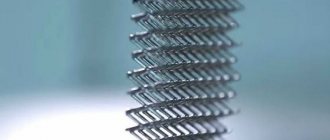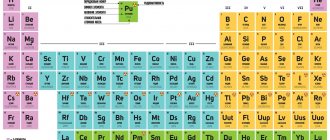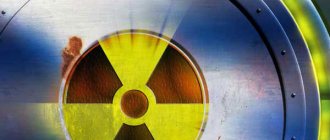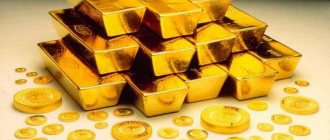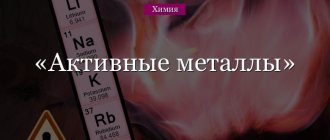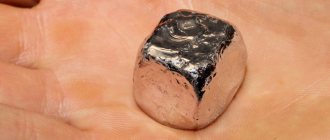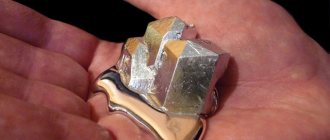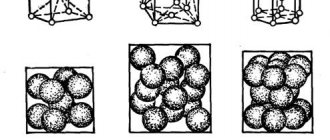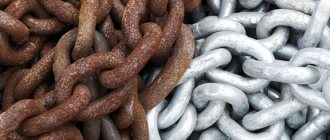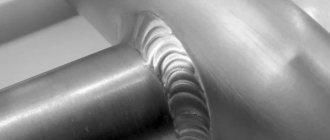Aluminum alloys
These include die-casting alloys of aluminum with magnesium, casting alloys of aluminum with silicon, self-hardening high-strength alloys of aluminum with copper. They are easily available, economical, have low density, high strength at low temperatures, good electrical conductivity and corrosion resistance.
Aluminum lends itself well to any processing, therefore it has successfully replaced steel and copper in many industries. Through their use, new designs of high-speed military equipment have been created, the speed of transport of all types has increased, and the capacity of tanks and containers for transporting petroleum products has increased.
Deck structures, load-bearing structures, roofing materials, equipment, wires, etc. are made from aluminum. Its only drawback is the dependence of mechanical properties on temperature growth.
Types of heavy non-ferrous metals
The raw materials for the production of heavy non-ferrous metals are sulfide and oxidized polymetallic ores. In this case, various production techniques and methods can be used, the main task of which is to maximize the extraction of valuable components from ore.
When processing heavy non-ferrous metals, pyro- and hydrometallurgy technologies are used. As a result of these processes, crude metals are formed, which are further refined and used in industry.
- Copper.
A common heavy metal with high electrical and thermal conductivity and ductility.
Copper combines well with other components. Due to this, the resulting alloys are widely used in mechanical engineering.
- Zinc.
Not all alloys containing zinc are used in industrial applications. It's all about its fragility. However, when heated to +150 °C, it can be easily forged and rolled. Zinc is resistant to corrosion, but is destroyed when interacting with acid and alkali.
- Lead.
It has a gray color with a bluish tint. Its melting point is +327 °C. Lead is both a heavy and soft metal; it lends itself well to hammering without hardening. When casting it takes on various shapes. Unaffected by hydrochloric, sulfuric, acetic and nitric acids.
Magnesium alloys
The most commonly used alloys are magnesium with zinc and aluminum, which are characterized by low specific gravity (up to 1.8 kg/cc), high specific strength and good casting characteristics.
The materials are characterized by a certain softness, poorly resistant to high temperatures and aggressive environments, but have proven themselves to be excellent when working under normal conditions. They are used to make tools, engine and brake parts for cars and carriages, instrument housings, cameras and computers.
To protect against corrosion, finished products are coated with protective oxide films and special varnishes.
Noble non-ferrous metals
These include:
- gold;
- silver;
- platinum
Gold is a metal with extreme chemical resistance. It cannot be oxidized even in molten form - it dissolves only under the influence of a composition of hydrochloric and nitric acids. It is distinguished by high fluidity rates and is excellent for processing. The price on the exchange of non-ferrous metals for 1 g is 2,450 rubles.
Silver is a metal characterized by ductility, high electrical and thermal conductivity, easy forging, and does not oxidize under the influence of O2.
Titanium alloys
Grades of titanium-based alloys differ in performance properties and chemical composition. Most often they contain: manganese, aluminum, chromium, tin, molybdenum, vanadium, silicon, iron.
Combining corrosion resistance and strength with low density, they offer a number of design advantages over steel or aluminum. Products made from this material:
- non-magnetic;
- wear resistant;
- characterized by high energy intensity and specific strength;
- work well in aggressive environments.
The material is well stamped, forged, rolled and welded. It is used to produce pipes, wire, sheets, profiles, slabs, and floors. Titanium is increasingly used in the manufacture of structural elements for aircraft, metallurgy, the military industry, radio engineering, chemical and energy industries, where its high corrosion resistance and low thermal conductivity play a key role.
The lightest metal in the world
Lithium
The lightest metal known to science is, of course, lithium. Like other light metals, it belongs to the group of alkali metals, which are characterized by high chemical activity. The density of lithium is 0.534 grams per cubic centimeter, i.e. it is almost twice as light as water. Moreover, lithium can float even in kerosene, so mineral oil, petroleum ether, gasoline or paraffin are usually used to store it.
Lithium is a soft metal, easy to cut with a knife
Lithium is 40 times lighter than some of the heaviest and strongest metals known to science - osmium and iridium (22.587 g/cm3). The molar mass of lithium is 6.941 g/mol. The serial number in the periodic table is 3. Lithium was isolated from the mineral petalite by the Swedish chemist Johann Arfvedson in 1817. In nature, lithium is found mainly in rocks (approximately 21 grams per ton). Seven years later, lithium was synthesized in the laboratory for the first time. Outwardly, this ductile and soft metal resembles ice and even has a similar silvery tint. To melt lithium, a temperature of 181 C0 is required.
Amazing lithium and its properties
This light metal is not used in its pure form, since it interacts too actively with its environment. Typically, lithium is alloyed with sodium or other light metals. Lithium cannot be used in the manufacture of pyrotechnics, thermonuclear weapons, and optics; Lithium is also often used as an oxidizing agent. Lithium is actively used in the pharmaceutical, food, textile and silicate industries. Some lithium alloys have even proven useful in electronics and aerospace applications.
Lithium is highly toxic
Other alkaline metals are also considered to be the lightest, although they are inferior to lithium. Following lithium are potassium (0.856 g/cm3) and sodium (0.971 g/cm3). They also don't sink in water. The remaining alkali metals (rubidium, cesium, francium) are heavier than water.
Beryllium alloys
The presence of beryllium gives the alloy heat resistance, strength and corrosion resistance. Its unique properties (increased rigidity, high melting point, amazing optical reflectivity) have attracted the attention of the aerospace and nuclear industries. It is used to make parts for spacecraft and satellite antennas, power reactors and aircraft disc brakes, target detection systems and space telescopes.
Beryllium has not found wider use due to expensive production, as well as the high toxicity of its powdered oxide.
Lightest artificial metal
Microlattis
It is known that the lightest natural metal is lithium.
However, in 2015, scientists at the University of California demonstrated an ultra-light material similar in strength to metals, but a hundred times lighter than foam. It is 99.99% air. Moreover, the thickness of its walls is only 100 nanometers - a thousand times thinner than a human hair. If you place a piece of microlattis on a dandelion, the flower, whose “cap” can be destroyed even by a slight breeze, does not become deformed.
Microlattis is so light that it does not deform dandelions
The structure of microlattis resembles human bones. The material has the same cellular structure, consisting of hollow nickel tubes intersecting crosswise. Thanks to its structure, the material is able to withstand enormous loads for its weight.
Microlattis under a microscope
Boeing immediately announced its intention to use microlattis for the “aircraft of the future.”
Types and marking of non-ferrous metal scrap
Some types of non-ferrous metal scrap can be recycled for reuse.
The table below presents a list of metals and the number of types of scrap for each of them.
| Metal name | Number of types of scrap |
| Aluminum | 32 |
| Tungsten | 17 |
| Cadmium | 2 |
| Cobalt | 3 |
| Magnesium | 8 |
| Copper | 13 |
| Brass | 23 |
| Bronze | 15 |
| Molybdenum | 9 |
| Lead | 11 |
| Mercury | 6 |
| Tin | 10 |
| Nickel | 26 |
Alloys of non-ferrous metals are most often delivered to recycling collection points. Belonging to a particular type of metal is determined by the element predominant in the alloy in percentage terms. The assessment occurs through the use of special equipment.
Scrap of non-ferrous metals is usually divided into groups depending on:
- origin;
- chemical components;
- physical condition of the material at the time of delivery.
Non-ferrous metal becomes scrap if:
- defect detected;
- written off as industrial waste;
- is substandard;
- became scrap of finished products.
The chemical components of scrap can only be determined in the laboratory, after which it can be correctly said which metal or alloy it belongs to.
The most valuable secondary raw materials are unalloyed metals containing small amounts of impurities. However, the physical parameters of scrap are not as important as the chemical ones.
In accordance with these characteristics, types of non-ferrous metal scrap are usually divided as follows:
- class A – scrap and pieces of waste;
- class B – shavings, wire and small lump waste;
- class B - waste in powder form (not common, usually with certain metals, including tungsten, molybdenum, cobalt and titanium).
- class G – other types of secondary raw materials.
All colored scrap undergoes thorough testing for:
- chemical and radiation pollution;
- degree of explosion hazard.
After it is completed, a certificate is issued confirming the safety of the scrap. Without this document, further transportation is impossible.
The saturation of scrap with harmful substances should not exceed the norm established by GOST 12.1.005.
The Ministry of Natural Resources and Ecology of the Russian Federation distinguishes five classes of non-ferrous scrap metal, representing chemical, radiation and explosion hazards. This is scrap:
- Dangerous for the ecological environment. Such wastes include mercury, as well as plutonium and polonium.
- It is highly dangerous and requires 30 years to eliminate the consequences of its use. It includes alloys of metals such as lead, molybdenum and cobalt.
- It has a moderate danger, after application of which it takes 10 years to restore the environment. It includes scrap with impurities of metals such as copper, iron, zinc, nickel, aluminum and silver.
- It has low danger and requires 3 years to eliminate the consequences of its use. Bronze belongs to this class.
- With a low level of danger that does not harm the ecosystem. This includes most types of non-ferrous metal scrap.
Scrap metal collection points are required to have a license. This need is due to the fact that non-ferrous metal poses a danger to people and the environment. GOST regulates the determination of scrap grades in accordance with designated quality parameters.
In this case, some characteristics inherent in scrap are taken into account, including:
- size;
- origin;
- degree of homogeneity;
- percentage of blockage;
- chemical components;
- physical deterioration;
- dimensions.
A representative sample allows you to identify the quality of scrap. During its transportation, labeling containing the following information is a mandatory requirement:
- Name;
- designation in accordance with GOST;
- type of secondary raw materials;
- alloy grade.
The marking must be securely attached to the cargo during transportation and storage.
To determine the grade of metal, you only need to look at a special document - a stamp book, which contains information about all the markings of the metal or raw material you are interested in.
Types of rare non-ferrous metals
These metals include:
- tantalum;
- niobium.
Tantalum is a hard and dense metal with a silvery hue, but can be easily processed. The main industries of its application are metallurgical, chemical and nuclear.
Niobium is a gray substance with a steely tint. It is distinguished by its special refractoriness and paramagnetic properties. Used in aviation and radio engineering industries.
Reactions with lithium
Given its alkaline nature, it can be assumed that it is very active. However, metal is the calmest representative of its group. At normal room temperature, lithium reacts weakly with oxygen and many other substances. It shows its “violent temper” after heating, then it reacts with acids, various gases and bases.
Unlike other alkali metals, it reacts mildly with water, forming hydroxide and hydrogen. There is practically no reaction with dry air. But if it is wet, then lithium slowly reacts with its gases, forming nitride, carbonate and hydroxide.
At certain temperatures, the lightest metal is active with ammonia, ethyl alcohol, halogens, hydrogen, carbon, silicon, and sulfur.
Toxicity
Despite lithium's important biological role in our bodies, it can be dangerous. The lightest metal is quite toxic and can cause poisoning. When burned, it provokes irritation and swelling of the mucous membranes. If a piece of whole metal gets on them, the same thing will happen.
Lithium should not be handled without gloves. By interacting with moisture in the air or moisture on the skin, it easily causes burns. You need to be even more careful with molten metal, as its activity increases significantly. When working with it, you need to remember that it is an alkali. You can reduce its effect on the skin with ordinary vinegar.
In the body, lithium increases the stability of the immune system and improves the functioning of the nervous system. But its excess is accompanied by dizziness, drowsiness, and loss of appetite. Metal poisoning leads to decreased libido, muscle weakness, and weight gain. In this case, vision and memory may deteriorate and coma may occur. When working with lithium, you should always wear gloves, a protective suit and goggles.
